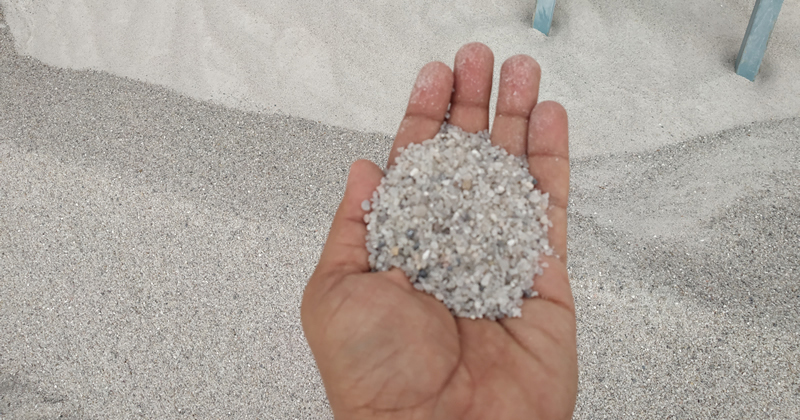


The main dusts on construction sites predominantly originate from concrete, silica, asbestos, cement, wood, stone and sand (van Thienen and Spee 2008), which are generated by drilling, blasting and grinding down certain materials such as stone and rocks (Akbar-Khanzadeh and Brillhart 2002 Flanagan et al. This fibrotic lung disease is one of the most prevalent occupational diseases, and has a long latency period (Leung et al. Occupational exposure to large amounts of RCS dust over time may be potentially fatal and irreversible. Silicosis is a lung disease resulting from the inhalation of respirable crystalline silica (RCS) mineral dust that is found in stone, rocks, sands and clays. Further efforts are required to provide greater protection for this group of workers to reduce their health risk.
#Silica dust manual
There is an increased risk of exposure to RCS dust and pulmonary symptoms among manual employees in the construction industry. The risk of breathing problems was increased among individuals working more than 20 years: OR = 4.8 (1.2–18.6), exposed to dust and smoking: unadjusted OR = 3.8 (1.0–14.1), age and length of time working in construction industry adjusted OR = 5.4 (1.2–24.4), whilst those with adequate information on health hazards were associated with lower risk of breathing problems. Compared to non-manual workers, manual workers were more likely to work >20 years: OR = 2.2 (95% CI = 1.3–3.6) be exposed to RCS dust and smoke: unadjusted OR = 1.8 (1.1–3.1), age and length of time working in construction industry adjusted OR = 2.2(1.2–4.2) and have breathing problems: unadjusted OR = 3.9 (1.5–10.4), age, smoking and length of time working in construction industry adjusted OR = 3.7 (1.1–12.5). There was a significantly higher percentage of non-manual employees below 45 years than older group (70.6% vs 39.3% χ 2 = 4.2, p = 0.039) and they worked less than 20 years than those working longer (82.4% vs 32.1% χ 2 = 10.7, p = 0.001). Seventeen were non-manual (professional, project managers and managers) and 28 were manual employees (tradesmen and construction workers). Of the 47 employees invited, 45 completed the questionnaire (95% response rate). Chi-squared tests were used to explore differences in health risk between manual and non-manual employees, and logistic regression to determine the risk of adverse events in manual workers.

Online survey of construction industry employees using a questionnaire consisted of 17 items to obtain information on demographic data, employment history and health risk exposure. The participants were drawn randomly from the construction industry by targeting UK construction workers’ websites. We examined differences in health risk among non-manual and manual employees in the construction industry. Construction workers are at increased health risk due to exposure to respirable crystalline silica (RCS) dust.


 0 kommentar(er)
0 kommentar(er)
